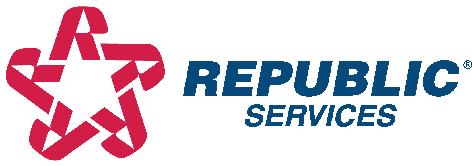
4 minute read
HUMAN RESOURCES
An Employee-Centric Return to the Office
By Jenni Graff FOUNDERS & SENIOR RECRUITING CONSULTANT, SILVERGATE RECRUITING
The decision to return employees to the office safely is complex. Professional offices in Montana generally have fewer employees, making socially distanced workspaces feasible. Despite the relative ease with which Montana businesses could safely return to work, however, there is a growing sentiment that employees are not particularly anxious to return to the office. Although this thought may require some getting used to, as Recruiting Consultants exclusively serving Montana, we are here to tell you, there is a legitimate business argument for offering more flexibility to your employees when you begin planning your return to the office. Where businesses who offer a more flexible work environment post-COVID will see their Return on Investment will be in employee satisfaction, retention, and attraction. We speak with hundreds of professional candidates each month, discussing what they seek in an ideal position, and the consensus is professional employees now demand a flexible work environment. Corroborating our daily conversations with quantifiable research, it is clear few professionals are itching to get back to the 9:00 to 5:00 grind. A recent Gallup survey found nearly two-thirds of those who worked from home during the pandemic would prefer to continue doing so.
The work/life balance of a flexible workplace is a deciding factor for many when considering a job transition. With a centralized office and occasional work from home, employees work primarily from the office but have the ability to work from home occasionally. The centralized office and “work from anywhere” model increase employee freedom by allowing them to choose where they work—from the office, home, or anywhere with a reliable Internet connection. Some companies have chosen to ditch the office all together and offer fully remote work. LinkedIn named the 3-2-2 model as a workplace trend to watch in 2021, which offers three days in the office, two days remote, and two days off. As employers try to accommodate employee desires, the hybrid work model has emerged as the most favorable model for return to work. Claire Matten, Advisor at Sterling Commercial Real Estate, noted many businesses in Montana seem to embrace the hybrid model. “As the working world adapts to a new normal,” she said, “we’re seeing companies provide more flexibility in a mix of work from home and in-office options. However, we’re definitely hearing that the collaborative, in-person time is crucial as well.”
It is estimated that losing an employee can cost 1.5 to 2 times the employee’s salary, making employee retention the goal for any business. If a hybrid workplace model retains the majority of employees, businesses should also consider the support systems needed for success. When considering a hybrid work model, technology requirements must be evaluated. Does it provide employees with a collaborative, effective platform for working and communicating? We see companies using programs such as Microsoft 365, Dropbox, G Suite, Zoom, Asana, and Slack to manage projects and ensure that employees are completing tasks and working effectively with coworkers without being overly burdensome or big-brotherish. If your business is already using one (or more) of these methods to keep track of project progress, a permanent hybrid work model could be attainable with additional investments in network security. Effective HR and onboarding are imperative for setting expectations for a flexible workforce. Expectations to be set include the number of in-person hours, analog hours, core hours the employee will be available, and acceptable response time to e-mails or instant messages. We’ve noticed companies that have flourished during the pandemic have outlined policies in regard to working hours, project updates, and preferred methods and response times for communication. When enacted, trust and boundaries are established and appreciated by all members of the team.
There will not be a return to “normal” for Montana businesses post Covid. With increased global competition and a tight professional labor pool that has not ceased due to the pandemic, Montana businesses need to continue to find ways to keep their business models fresh. Doing so will satisfy current employees and attract new talent with matched drive and passion. Hybrid models have the capability to adapt with unforeseen circumstances (ahem, COVID-19), and businesses can tailor any model to align with their mission and values. If the benefits of a hybrid model outweigh the costs associated with potential employee turnover, it could be the right choice. stop
Jenni Graff is the founder and senior recruiting consultant of Silvergate Recruiting, a boutique recruiting firm based in Missoula, MT. She works with professional service firms across Montana to help them improve their talent attraction processes and recruit senior-level employees.
1 https://news.gallup.com/poll/321800/covid-remote-work-update.aspx#:~:text=Nearly%20two%2Dthirds%20of%20U.S.,a%20concern%20about%20COVID%2D19 2 https://builtin.com/recruiting/cost-of-turnover



& Visitor Center

Recycling & Waste Solutions

RepublicServices.com/Montana
July 29–31, 2021 • Flathead Valley






